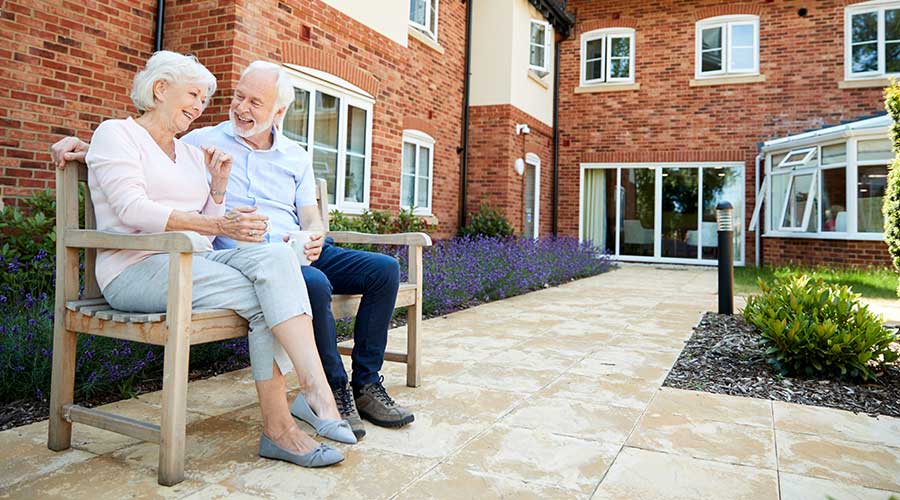The recent boom in luxury senior care facilities should not come as a surprise, since more families are getting involved with where loved ones reside. Prior to these new developments, senior living facilities missed out on achieving a level of care due to their environments not being conductive to certain programs, lifestyles and activities. Where people live has an impact on their lives, so the optimization of facilities that provide a high-end interior environment that showcases quality of care is a trend that will not be going out of style.
Healthcare Facilities Today spoke with Blima Ehrentreu, CEO and founder of The Designers Group on the reasons designers continue to upgrade senior care facilities and steps they are taking to address increased expectations from residents.
Healthcare Facilities Today: How have senior care facilities upgraded their buildings in the last five years?
Ehrentreu: We’ve seen senior living communities shift towards an emphasis on connectivity and wellness for their residents, even more so than in the past. This encompasses many aspects of a project, including the amenities offered, common rooms and gathering spaces, and medical services –– all of which are directly impacted by the built environment, both from a functionality and aesthetic perspective. We’re also seeing an increased focus on elevating the types of services offered in senior living facilities. Our team at The Designers Group brings hospitality-inspired amenities to senior communities to facilitate five-star experiences that reflect an enhanced level of care. Incorporating areas like well-appointed activity rooms and relaxing gathering spaces to interiors add a unique layer of luxury that sets communities apart.
HFT: Why are the expectations of senior care facilities changing? How are designers addressing these changes?
Ehrentreu: As our population ages, we’re seeing expectations evolve, as they do across generations. With more Baby Boomers entering the stage of life where they want to settle down for retirement, they value things that are different from what has been prioritized in the past. This aging population is familiar with technology, therefore there’s an expectation that their environment is technologically advanced and equipped to accommodate the everyday conveniences that they were used to at home and in life. Coming out of the pandemic, there’s also an enhanced focus on connectivity, reinforcing the importance of socialization and togetherness.
HFT: Why has there been a boom in luxury senior care facilities? How can these facilities become more affordable?
Ehrentreu: People are realizing just how important their living environment isIt’s not only where they lay their head down to sleep, but it’s a home that sets the tone of their day-to-day lives and it should be conducive to happy, healthy lifestyles.
After the COVID-19 lockdowns, people have come to recognize that homes are an extension of who we are. Many facility managers and owners have embraced this concept by making decisions to upgrade interiors that may have gone by the wayside years ago. Residents in senior living communities especially appreciate a more luxurious environment where they can feel both safe and comfortable. With that said, luxury doesn’t have to come at an unattainable price tag; designers can play a role in creating upscale environments that are practical and cost effective.
At The Designers Group, we pull inspiration from other industries to maximize the effectiveness of our projects. For example, we’ve taken elements of hospitality design and applied it to senior living facilities, utilizing color palettes, materials, and layouts that shape serene atmospheres that are reminiscent of spas or hotels; having a similar impact to pricier options without going over budget. Affordability can be a challenge, but we try our best to navigate around such obstacles. For example, we will often mix higher and lower priced materials to manage cost without compromising the luxurious look and feel of a space.
Mackenna Moralez is the associate editor for the facilities market.

 Designing Healthcare Facilities for Pediatric and Geriatric Populations
Designing Healthcare Facilities for Pediatric and Geriatric Populations Kaiser Permanente Announces New Hospital Tower at Sunnyside Medical Center
Kaiser Permanente Announces New Hospital Tower at Sunnyside Medical Center Building Disaster Resilience Through Collaboration
Building Disaster Resilience Through Collaboration Amae Health Expands to New York City
Amae Health Expands to New York City Hospital for Special Surgery Opens Two New Facilities in New Jersey
Hospital for Special Surgery Opens Two New Facilities in New Jersey